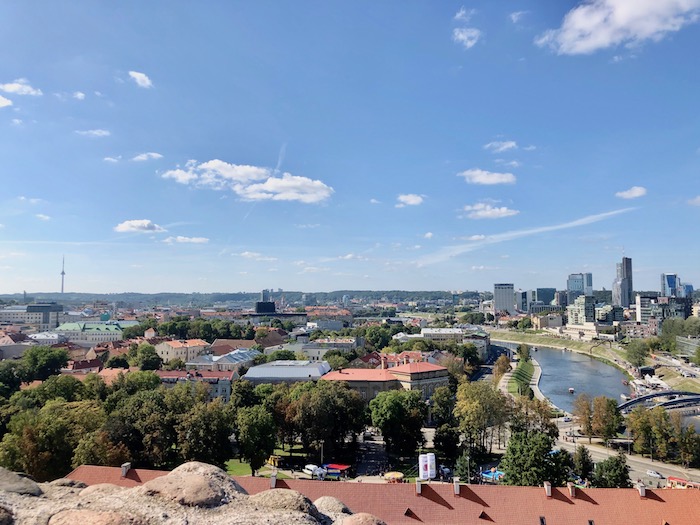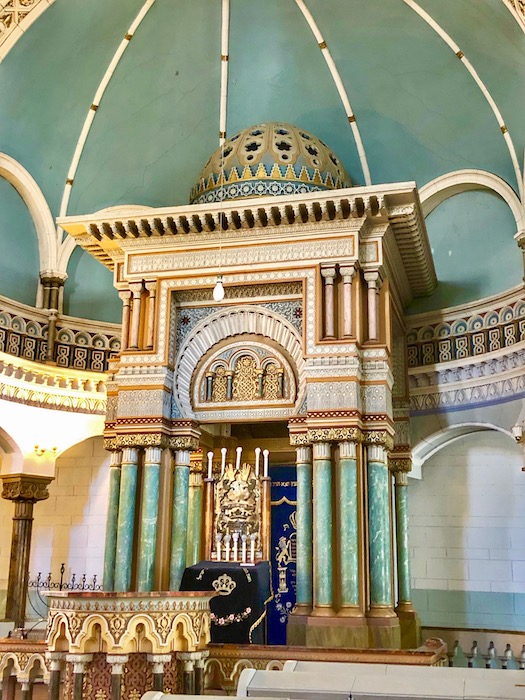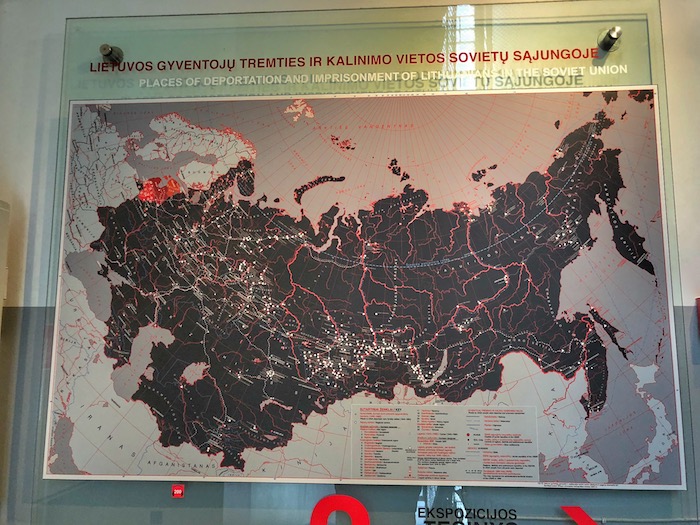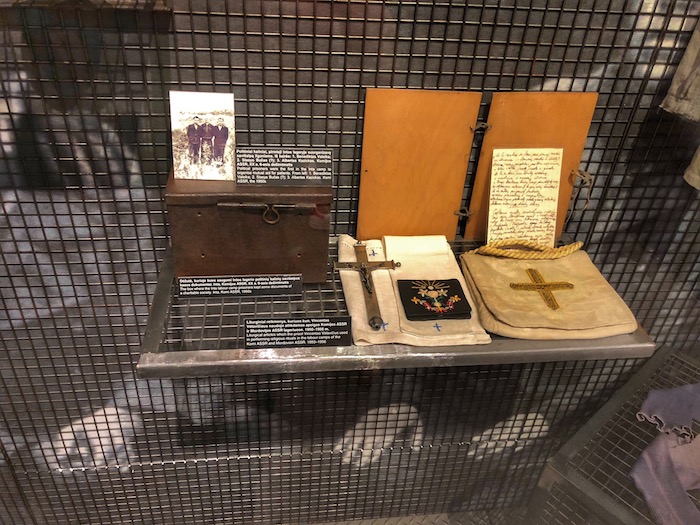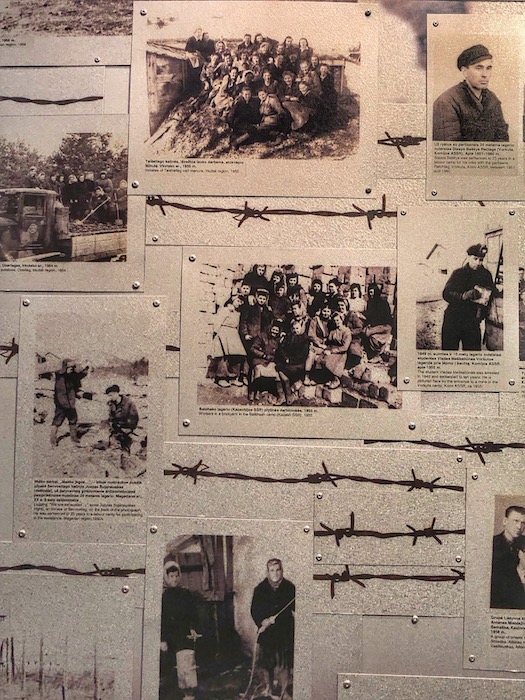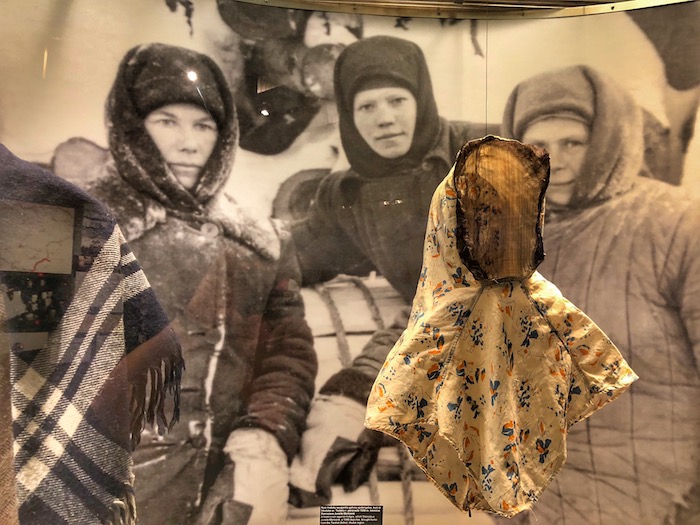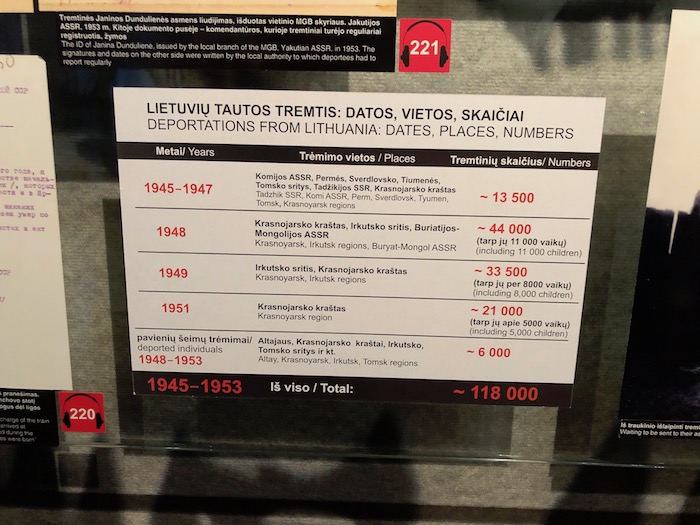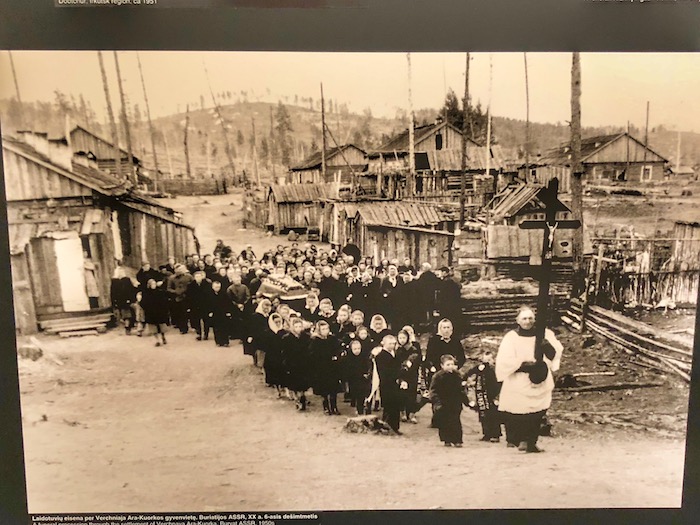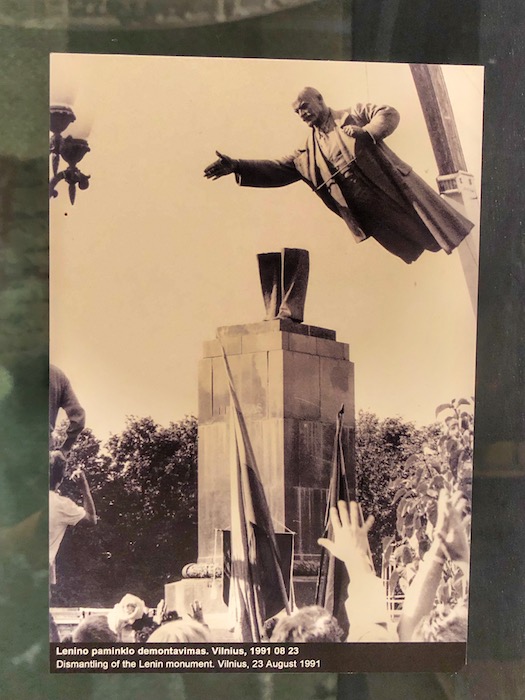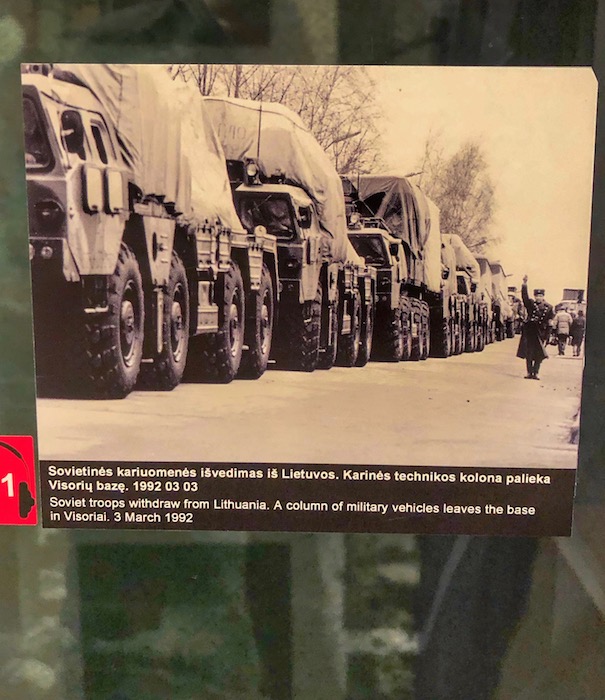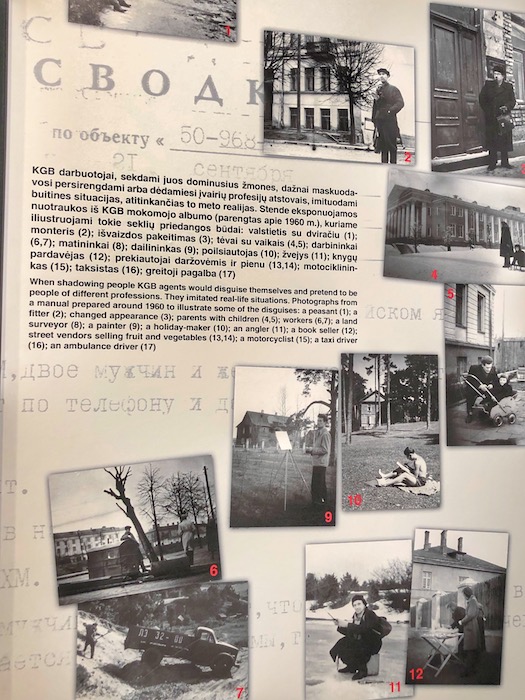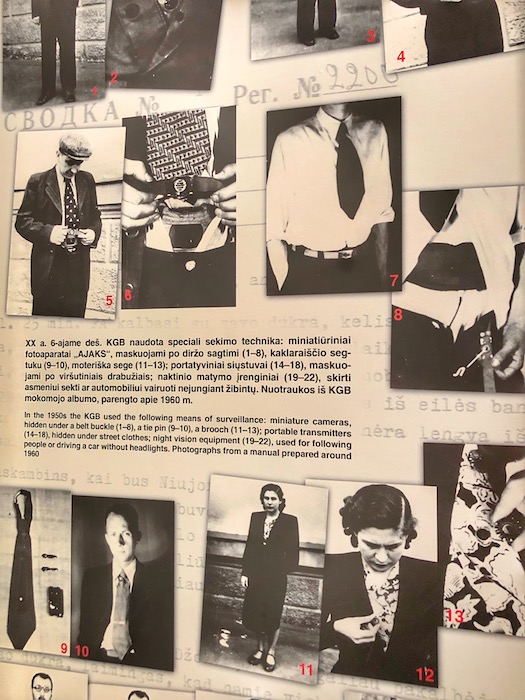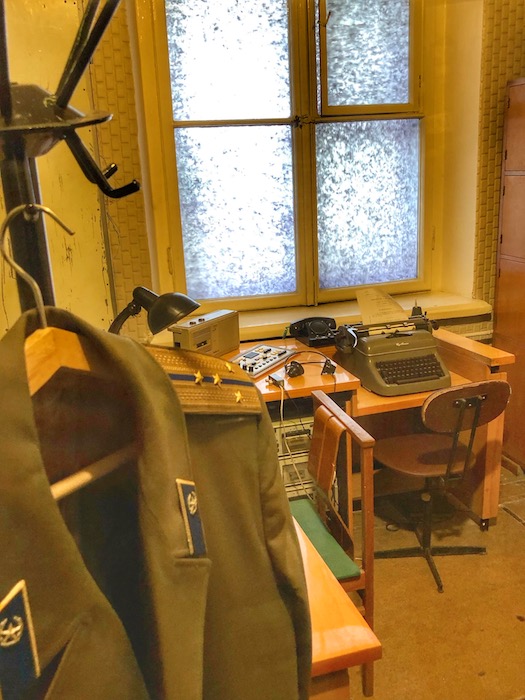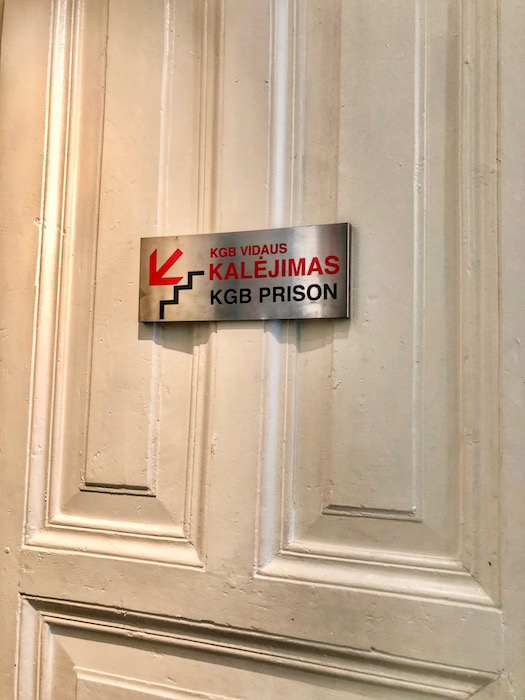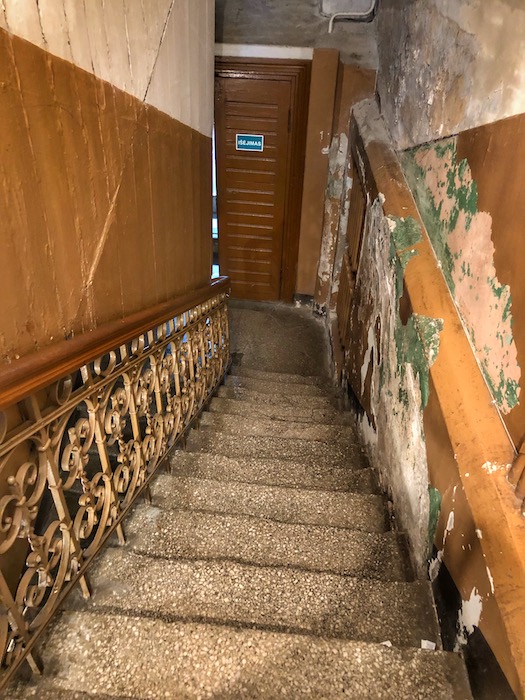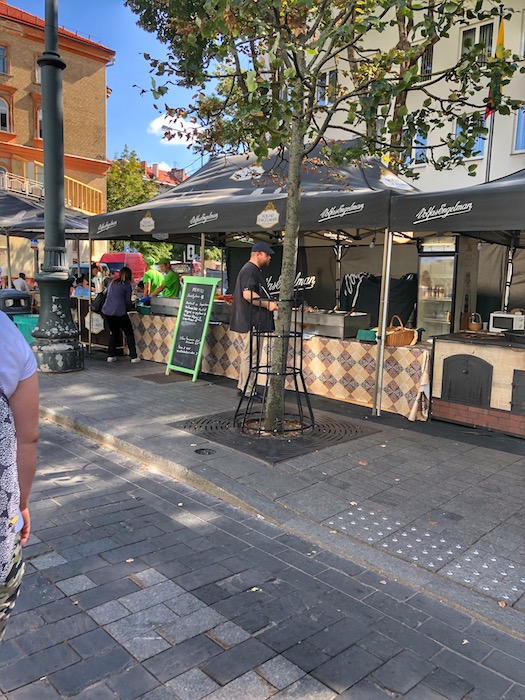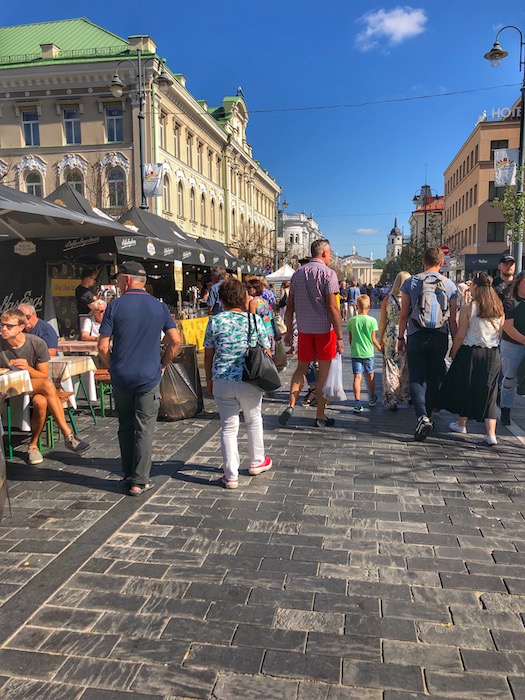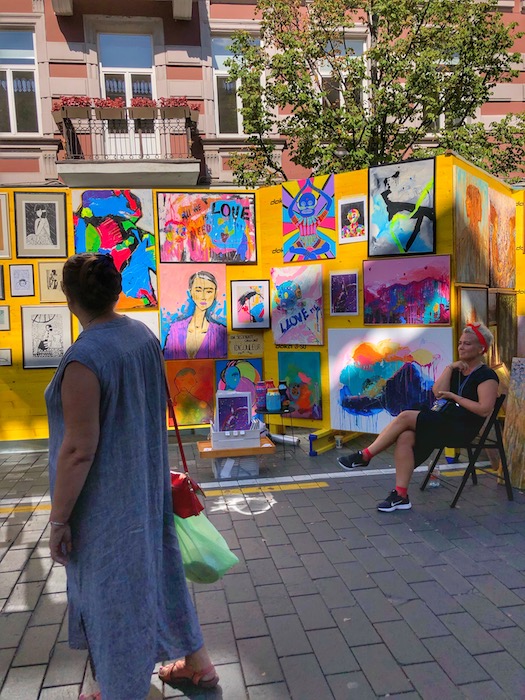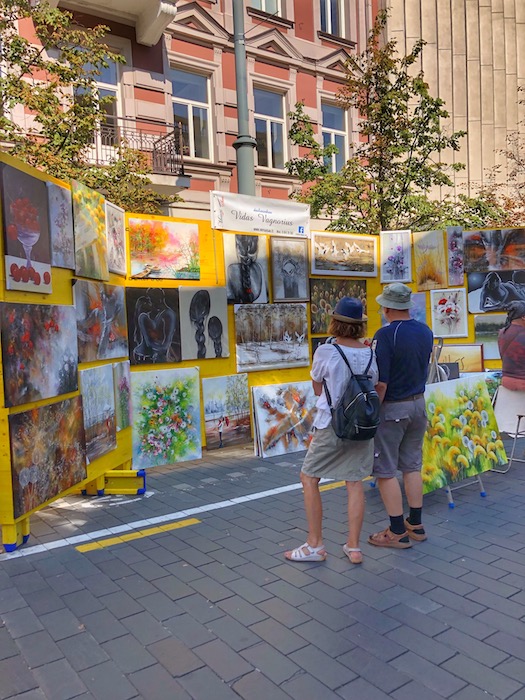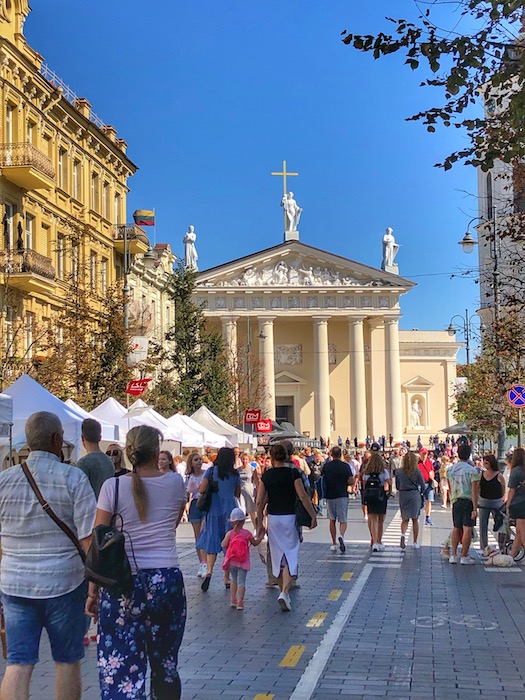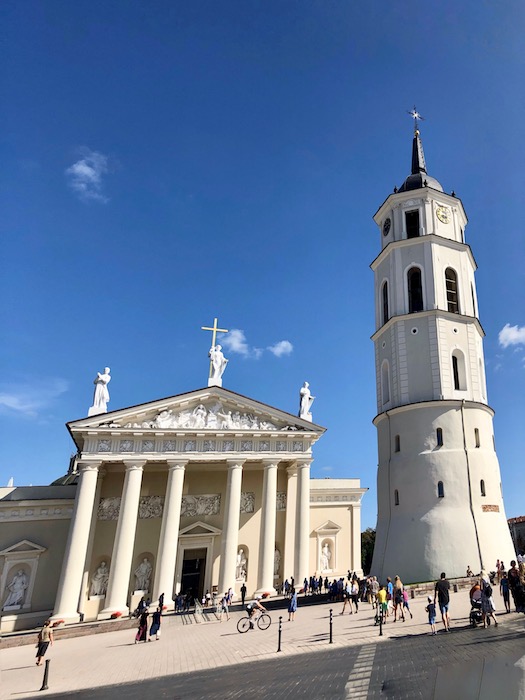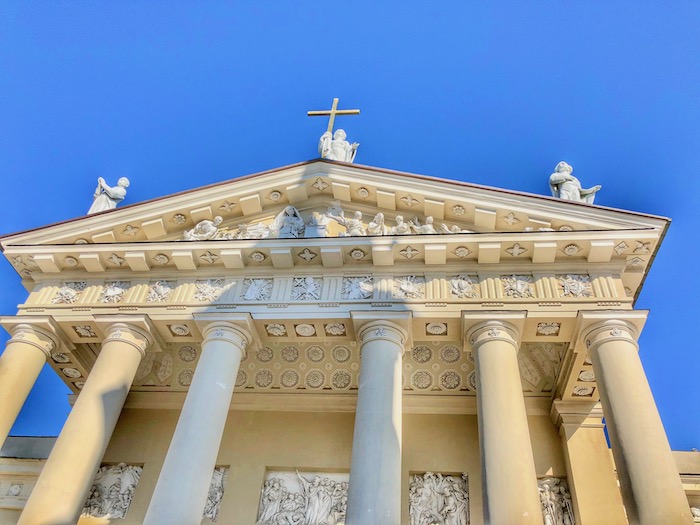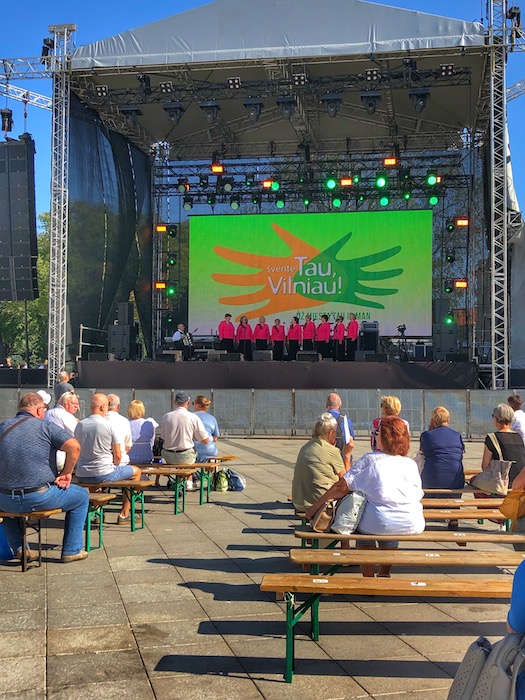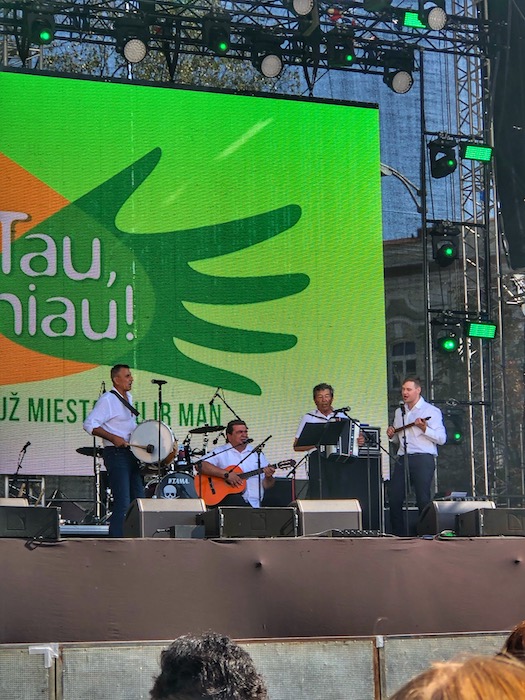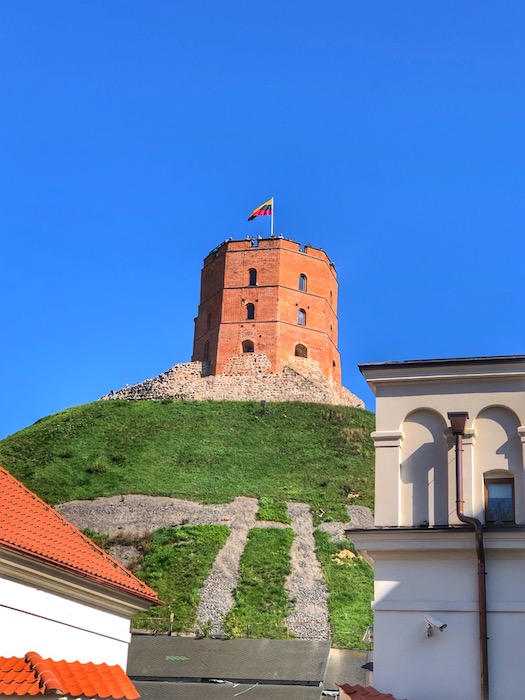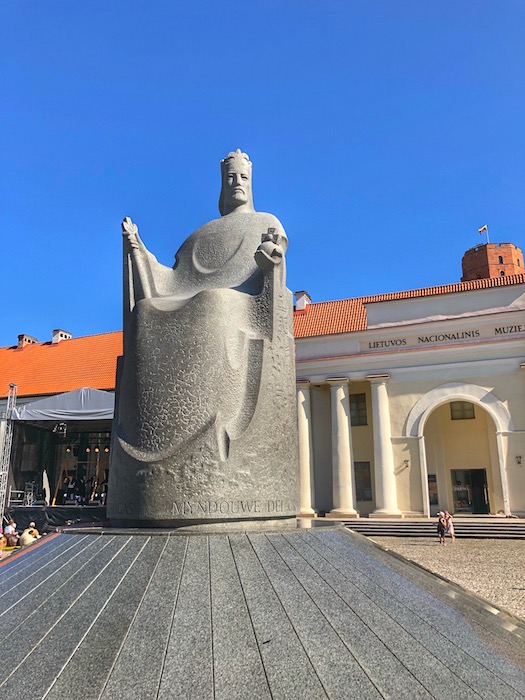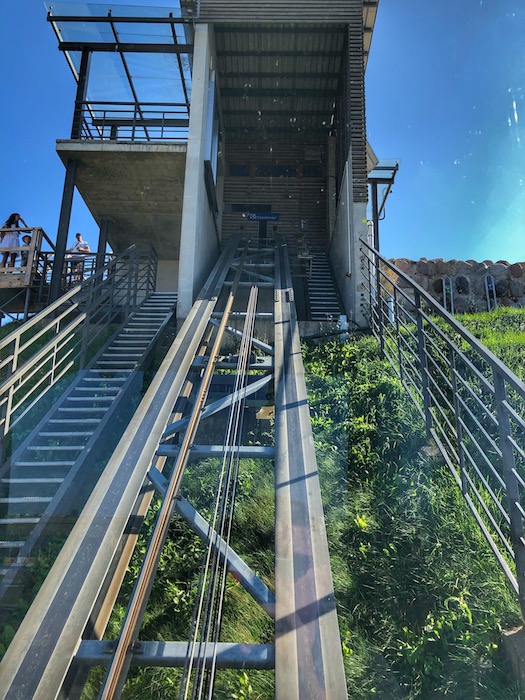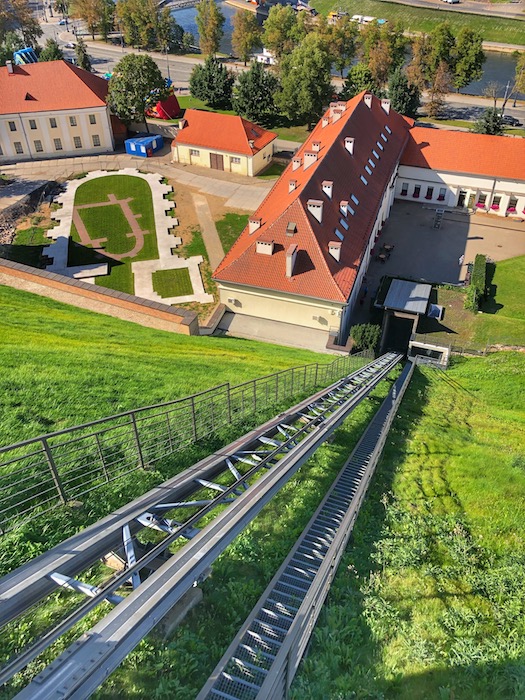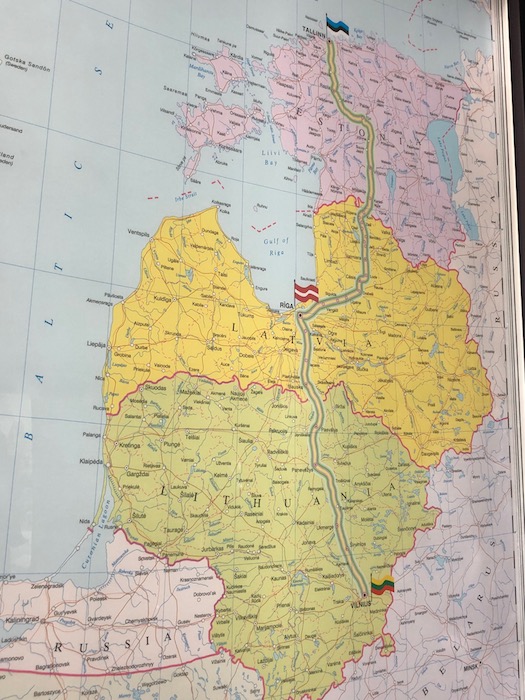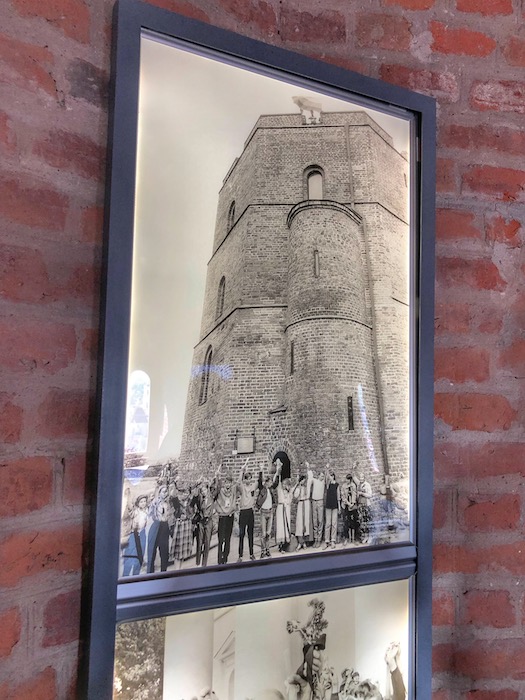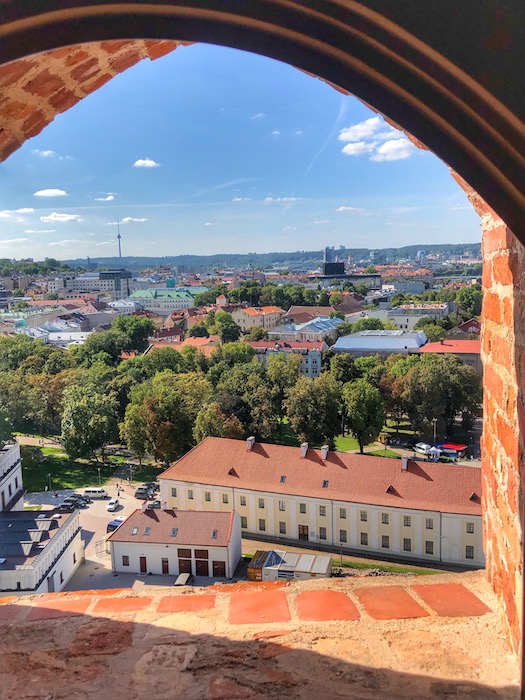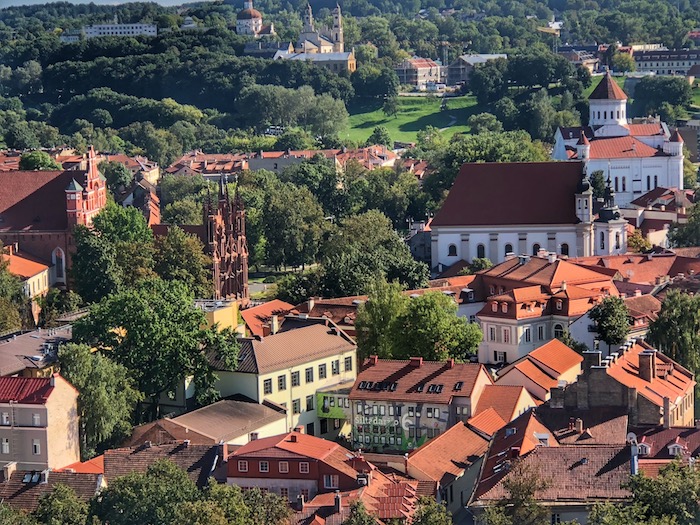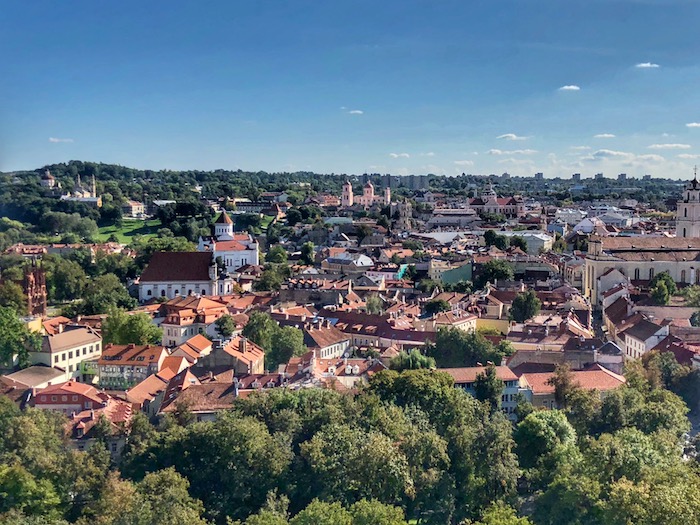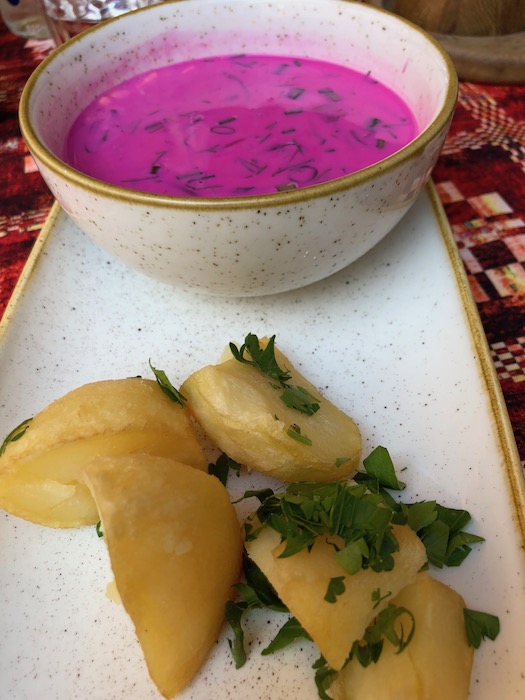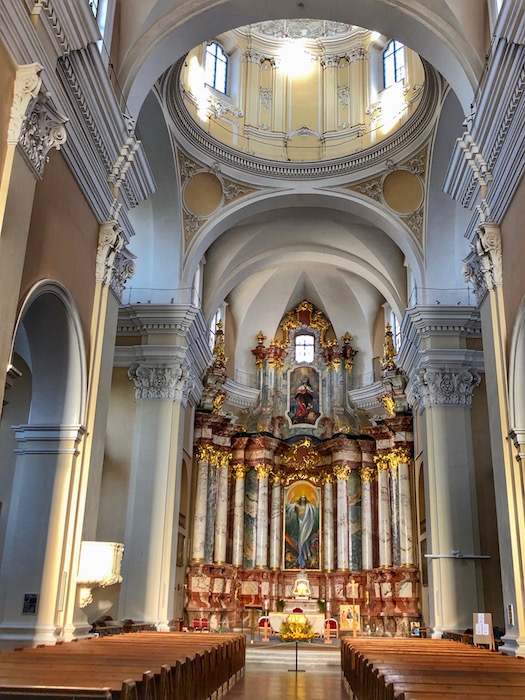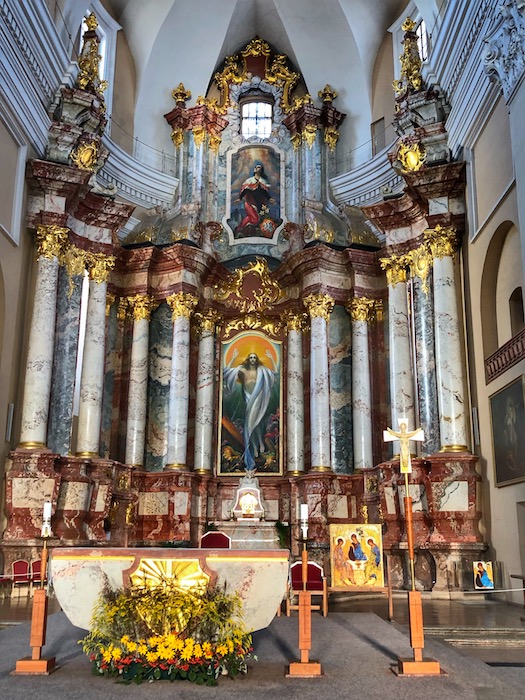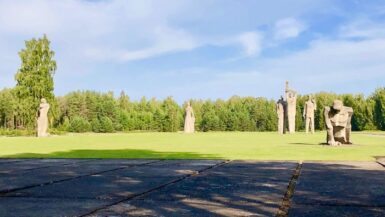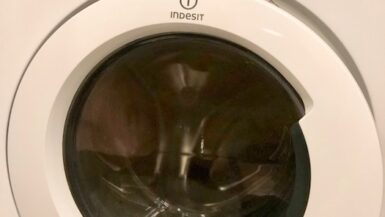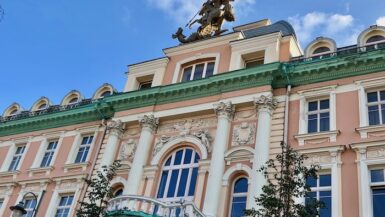September 1, 2019
Just down the street from my apartment in Vilnius, I came upon a giant egg balanced on a pedestal. Turns out, the egg was the same one that had stood in the square in Užupis. It was the main monument in Užupis from 2001 until the Angel Gabriel statue was unveiled in 2002. Since people actually liked the egg (it is unusual), the city of Vilnius decided to find a new place for it. There are some who don’t like the Easter egg and want it torn down, but I think the naysayers are in the minority. As I said, it is unusual.

Further on down past the egg, I stopped by the Church of All Saints. Mass was in full swing, but I stood at the back reveling in the magnificence of its interior. The church has an interesting past. It is built at the end of the street where the main gate of the old ghetto stood. In WWII, there was a tunnel used for the sewer that connected the church to the ghetto. While some Jews were smuggled out through the tunnel, it was used primarily by the priest to smuggle food into the ghetto. During the Soviet era following the war, the church was converted into a folk art museum.
The exterior of the church is Baroque done in the popular pink/peach color and was built between 1620 and 1630. A Carmelite monastery was once attached to the church. Inside, the statuary is stunning and there are 18 Baroque-styled altars. Unfortunately, I couldn’t get close-up photographs because mass was in process and the church was packed. I was uneasy trying to sneak any more photos than I did due to the piercing scrutiny I received from a little old Lithuanian (I’m assuming) woman.
Even further down the street (who knew I was living on such a wonderful street), I found the Choral Synagogue. Prior to WWII, there were more than 100 synagogues in Vilnius. This synagogue is the sole remaining one. Built in 1903, it is square in design, topped with a dome, and has pastel-colored Romanesque and Moorish decorations inside. A second story gallery overlooks the main prayer area and was used for women and a choir (thus, its name I suppose). Unbeknownst to me, today was the European Day of Jewish Culture with many activities throughout the city. Unfortunately, I didn’t know and hadn’t registered for any of them in advance.
My main destination for the day was the Museum of Occupations and Freedom Fights (previously the Museum of Genocide Victims), which is located in the former Gestapo/KGB headquarters in old town Vilnius. This museum doesn’t focus on the Holocaust, dedicating only a tiny portion of its real estate to the atrocity (200,000 Lithuanian Jews were killed); instead, it focuses on the 50-year occupation by the Soviets and the horrors inflicted during that time. As you walk along the side of the building, the names of the 1,000 prisoners executed inside are engraved on the walls.
The museum itself is filled with exhibits of photographs, documents, and personal belongings. Each room touches on a different subject matter of the 5 decades of occupation. I found the exhibitions to be extremely enlightening as I was not aware of much of what was described. A large portion of the exhibit revolved around the resistance movement and the lives of those who participated in it. When you think about a “resistance,” you tend to forget that those involved were people with lives outside of the fight. The exhibits did a good job of giving the resistance fighters faces and personalities.
From 1944 to 1953, 118,000 Lithuanians were deported by the Soviets, many to outposts in Siberia. The photographs of the families and children being rounded up and shipped off were the most haunting in this section of the museum. The disruption of so many lives is unthinkable.
Eventually, the power of the Soviets receded (only to rise up again later), but not before the Hill of Crosses (photo on left) was decimated in an effort to knock the spirit of the Lithuanian people down once again.
As noted before, the museum is housed inside the old KGB headquarters. Several exhibits showed the organizational structure of the KGB and described their efforts to infiltrate and defeat the “enemy.”
The museum is located in the upper floors of the building; down in the basement, is the old KGB prison where prisoners were kept up until 1991. Walking down the staircase, there’s a palpable change in the air. Although brightly lit, the hallways were eery and I felt very closed in. Back in the 1940s-1960s, there were 50 cells, but only about 20 remain. Up to 15 people were kept in a cell at any given time. The solitary confinement cells were tiny. There were even solitary confinement cells that were filled with water where the prisoner was made to stand on a small podium in the middle. If the prisoner dozed off, they fell into the ice-cold water. The conditions were deplorable.
A separate area of the prison was kept for executions. A chill ran up my spine as I walked around the main room with a small window at one end where bodies were thrown out onto a waiting truck after being shot.
Overall, I thought the museum was very well done and highly educational. Even though it was intense, I wouldn’t have wanted to miss visiting it. This portion of Lithuanian history must not be forgotten so that it doesn’t happen again here or anywhere else in the world. Just outside of the museum is a display of artwork done by schoolchildren documenting their impressions/feelings about this period of Lithuanian history. Some of the art showed the pain felt by the people, but much of it was filled with hope for the future. Out of the mouths of babes.
After leaving the museum, I spent the next hour or so wandering among the vendors at the Vilnius City Festival. It seemed as if all of Vilnius was out taking in the warm temperatures and sunshine.
I ended up back at Cathedral Square. It seems as if all roads lead to the Cathedral, or at least it seems that my wandering always leads back to it.
Off to the side of the Cathedral, a large bandstand was active with local dancers and singing groups. It was fun to sit and tap my toes along to the music. The people-watching was pretty phenomenal as well.
The other thing I really wanted to do today was to get to an area with a good view of the city since it was a clear, bright day. Since the Upper Castle, which stands at the top of a hill, was not too far away, I decided to make my way up there.
To get to the top of the hill and Gediminas’ Tower, you can either walk or take the funicular. Since my husband is a big fan of funiculars (and I didn’t want to climb the hill), I chose to take the little tram up in his honor.
Although some guide books say that the admission price to the museum housed in the tower isn’t worth it, paying the fee is the only way to get to the top of the tower. Some of the exhibits were a bit lame, but I enjoyed the little movie and the exhibit about the Baltic Way. The Baltic Way, Baltic Chain, or Chain of Freedom was a peaceful demonstration on August 23, 1989, where two million people joined hands to form a human chain of 419.7 miles crossing Estonia, Latvia, and Lithuania. I recall hearing about it at the time, but I was not aware of the history behind it or its meaning. This trip has been very enlightening.
I climbed the incredibly steep stairs up to the top of the tower for the sweeping panorama of the city. The views were breathtaking. Vilnius is such a lovely city on the ground and from up above.
It was almost dinnertime by the time I descended from the hill. I decided to stop at a restaurant just outside my neighborhood that was known for its traditional food. I had yet to try Lithuanian beetroot soup or cepelinas, so I ordered both.
On this trip, I’ve eaten more beets than I’ve ever had in my life. Beet soup in various iterations is very popular from Ukraine through the Baltics. Lithuanian beetroot soup is served cold with a side of warm boiled potatoes. The soup is basically a mixture of buttermilk, beets, and herbs. It is hearty, tasty, and should probably not be paired with cepalinas. Named after their Zepplin-like shape, cepelinas are dumplings made from potatoes, which are stuffed with meat or cheese. While they are called dumplings, they look like giant gnocchi. I’d love to say they were as tasty as gnocchi I’ve had in Italy, but I can’t. The cepalinas sat on my plate like two ginormous gelatinous blobs. The “dough” was very gooey and not very appetizing. I ended up cutting the meat mixture out of its casings – it was the best part of the dish. I can say that I was disappointed that my dumpling run on this trip ended with these. Oh well, I’ll just have to make pierogis when I get home.
On my way back to the apartment, I passed St. Casimir Church. There was no mass underway, so I was able to walk around admiring the statues, artwork, and icons. They did a wonderful job restoring the church after its desecration by the Soviets. It’s as beautiful on the inside as it is on the outside.
Tomorrow is essentially the last day of my trip. I’m taking a trip outside the city to see a castle (I do love a good castle) and then back to pack for the long multi-leg home. I can’t believe that two months have come and gone. So many memories, so little time.

